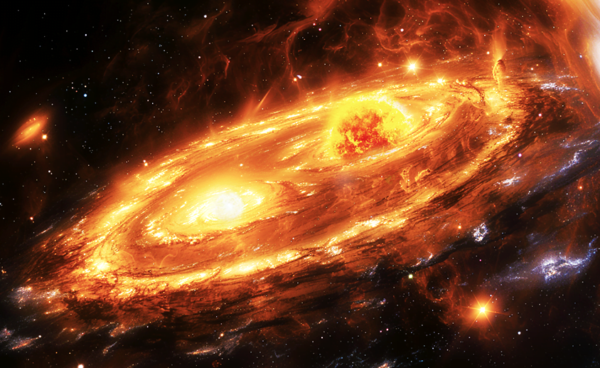Table of Contents
Table of Contents
Whats a Nova? How two Stars Create a Dazzling Lightshow
Think of a binary star system as two pals who are constantly hanging out in space. This star system is basically two stars that are stuck together by gravity, kind of like two friends always orbiting each other in space. Instead of a single star like our Sun, a binary system has two stars. These stars can be similar in size or very different, with one being a big giant and the other a tiny shrunken star.
The gravity of both stars pulls on each other, keeping them locked in a dance around a central point. It’s like they’re both whirling around a shared invisible pole.
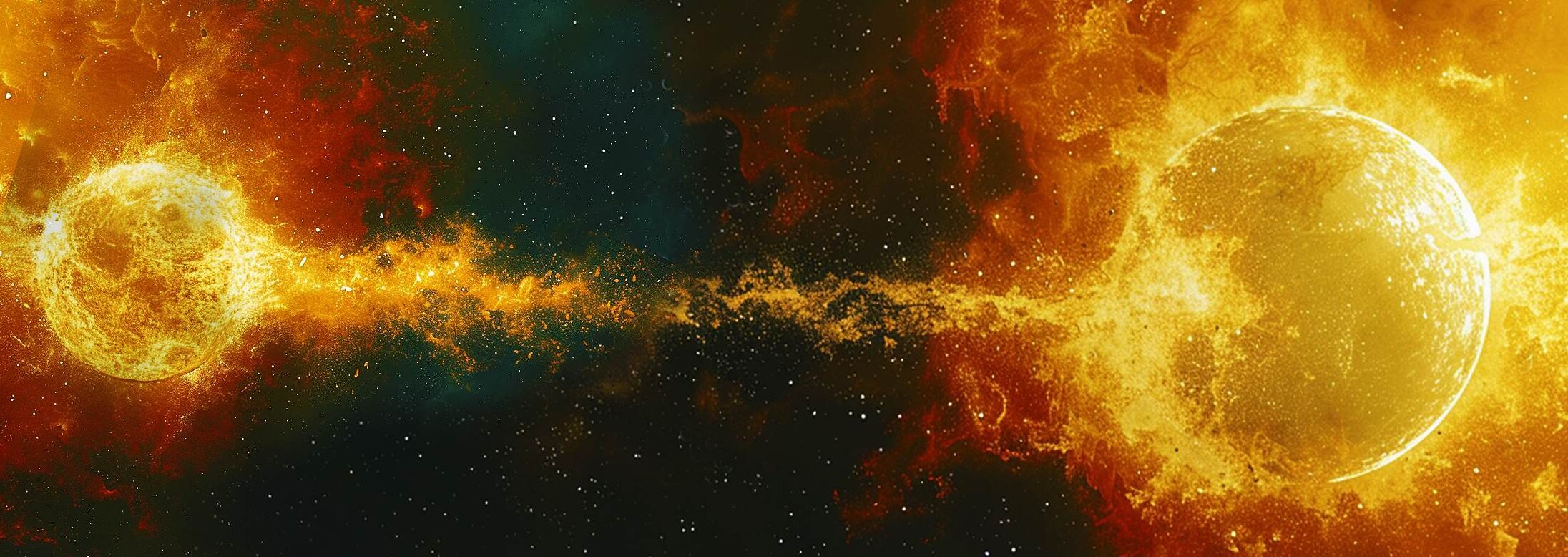
The red giant star is a bit dirty and is continuously releasing a coating of gas. This vaporous outer layer drifts towards the white dwarf and accumulates on its surface. Because it is so dense and wants everything to be compressed tightly, the white dwarf is cranky. This wouldn’t normally be an issue, but the gassy skin is primarily hydrogen, which functions as star fuel.
Imagine the white dwarf as a tiny, extremely hot pressure cooker at this point. The white dwarf’s interior pressure increases as layers of gassy skin accumulate. All of a sudden, BHOOM! A Nova occurs when all that hydrogen explodes in a huge explosion that temporarily brightens the entire star system.
This specific type of stellar explosion in a binary star system is know as NOVA. It’s a dramatic increase in brightness caused by a thermonuclear runaway on the surface of a white dwarf.
Because it is bigger, the red giant star sheds its outer layers of gas that is rich in hydrogen. The white dwarf’s gravity draws this hydrogen gas in, causing it to accumulate on its surface. A quick and intense fusion reaction of the accumulated hydrogen occurs due to the extreme temperature and pressure on the white dwarf. This results in a massive energy release that skyrockets the star system’s brightness.
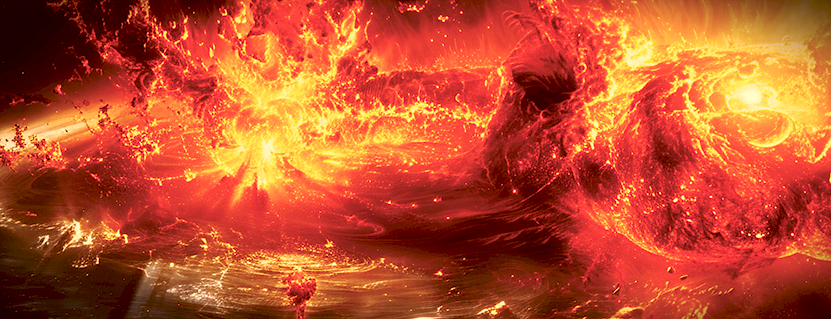
The Dazzling Reappearance of T Coronae Borealis: A Spectacle
T Coronae Borealis or T CrB is such a binary star system situated in the constellation Corona Borealis, sometimes referred to as the Northern Crown, approximately 3,000 light-years away. It was given the nickname “dead nova” or the Blaze Star” because of an earlier explosion that occurred in the early 19th century, spectacularly erupting exactly every 80 years.
T CrB normally has a magnitude of about 10, which can be viewed by binoculars. The Nova Explosion have been seen twice, reaching magnitude 2.5 on May 12, 1866 and lastly on February 9, 1946, with a magnitude of 3.0. Its believed to be seen even in past years 1217 and 1787 with magnitude of 10.0
Scientists believe that T CrB may soon undergo another explosion— anywhere between April to September 2024, possibly one that is visible without a telescope! For sky watchers, this would be an exceptional treat. If it unfolds as predicted, T CrB will temporarily rival the brilliance of Polaris, the North Star.
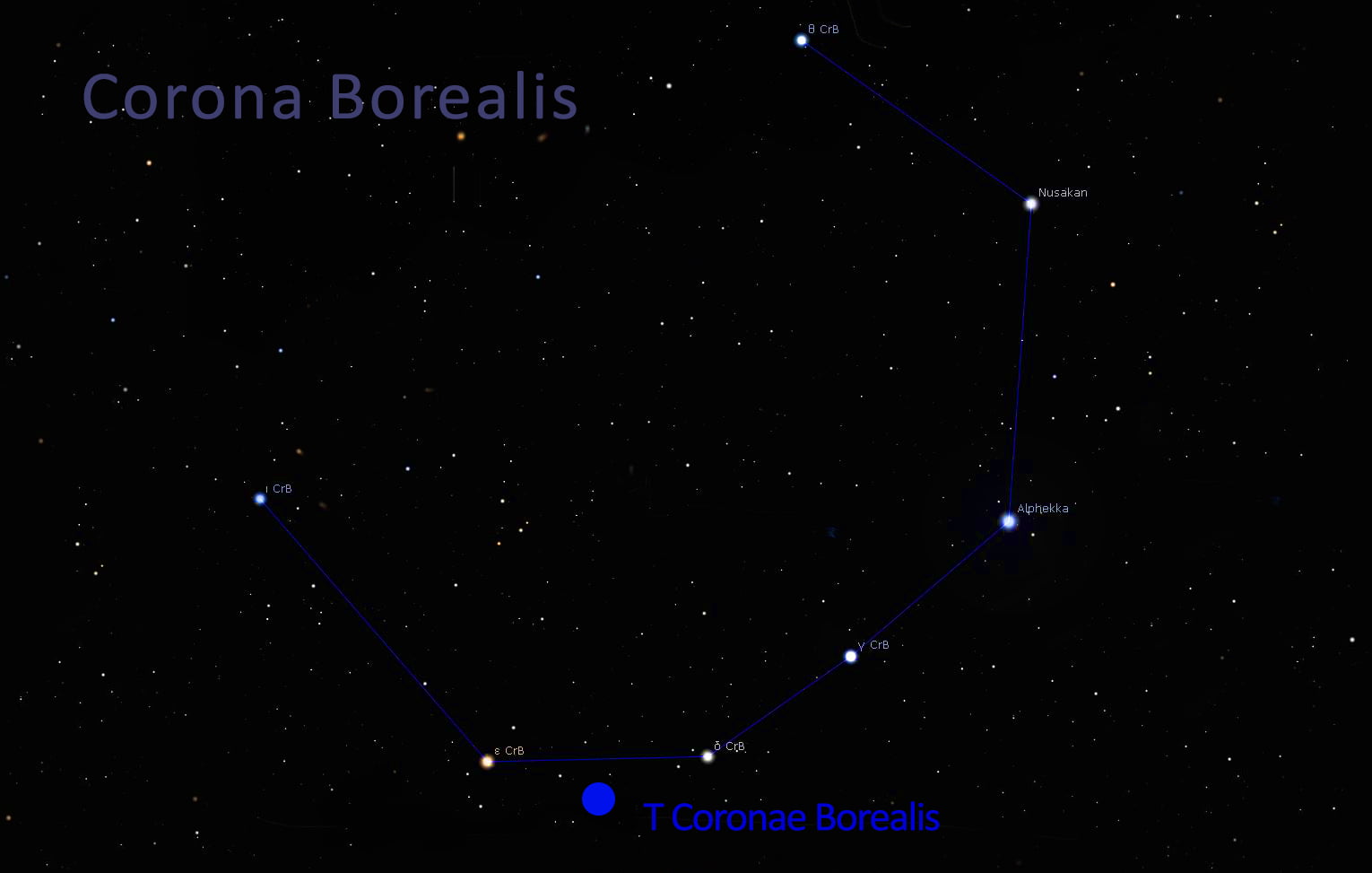
It is reported that on April 20, 2016, the star had steadily brightened since February 2015, going from brightness 10.5 to roughly 9.2. There have been reports of a 1938 occurrence that was comparable, as well as a 1946 eruption. Even though the star’s brightness had somewhat decreased by June 2018, it was still very active. It decreased to magnitude 12.3 in March or April of 2023. The year preceding the 1946 eruption had a similar weakening, suggesting that it will very likely erupt in April or September of 2024.
How is Nova different from a Supernova explosion
Distinguishing Novae from Supernovae (plurals) is interesting, as it is another important type of stellar explosion with these features :
- Intensity: Nova are less violent than supernova events. They involve a runaway fusion event on the white dwarf’s surface, while supernovae mark the complete destruction of a massive star.
- Frequency: Nova can occur repeatedly in the same system, as in the case of T Coronae Borealis. Supernova are a one-time event, signifying the star’s complete death.
- Remnants: Nova leave behind the binary system, with the white dwarf potentially accumulating more material for future outbursts. Supernovae may leave behind a neutron star or black hole, depending on the original star’s mass.
So, T Coronae Borealis is a recurrent nova, meaning it has a history of these outbursts and is predicted to continue such event after a fixed interval.
What is the location of T Coronae Borealis
T Coronae Borealis (T CrB) resides in the constellation Corona Borealis, also known as the Northern Crown. It is a small constellation, in between Hercules and Boötes constellations. In May it is easily observed in Southeast on the night sky, laying in the shape of an “upside down” crown or ‘U’ shape, tilted leftwards by around 30 degrees.
Corona Borealis is situated in the northern hemisphere sky. If you’re in the southern hemisphere, you might not be able to see it depending on your latitude.

What are the names or codes of the two stars in T CrB
Unfortunately, individual stars within binary systems like T Coronae Borealis typically don’t have separate names or widely used designated codes. The reason why is:
- Single Designation: Binary stars are treated as a single astronomical object for naming purposes. They are usually assigned a single designation, like T Coronae Borealis in this case.
- Focus on the System: Astronomers are often more interested in studying the binary system as a whole, observing how the stars interact and influence each other.
However, astronomers do use internal identification codes within their research depending on the specific observing technique. These codes might not be standardized or publicly available.
Can it bee seen by Naked eyes this year
Well, it is dependent upon multiple things:
- Optimal Conditions: There’s a good chance you could observe T CrB during the outburst, with your unaided eyes, if you’re in an area with low light pollution, far from bright city lights, and manage to get a clear sky.
- Location Matters: One major factor is light pollution. Even a magnitude 2 star may be hard to see without binoculars in brightly lit urban environments.
- Patience: The eruption may not occur right away. Be ready to search for a “new” star that may emerge in the Corona Borealis constellation by keeping a watch on astronomy news sources.
There are ways to see this event even if it’s invisible to the unaided eye:
- Binoculars: You can greatly increase your chances of spotting T CrB during the outburst by using a basic set of binoculars, that has at least a 7 degrees field of view.
- Astronomy Clubs: A lot of astronomy clubs may host telescope-equipped viewing events to provide a closer look at the nova.
- Online Resources: Professional observatories may offer live broadcasts or online resources that allow viewers to virtually witness the show.
In summary, T Coronae Borealis is ordinarily invisible, but under favorable viewing conditions, the anticipated eruption may reveal it to the naked eye. Keep an eye on the sky and stay up to date on astronomy news; you might just catch a glimpse of an uncommon celestial occurrence!
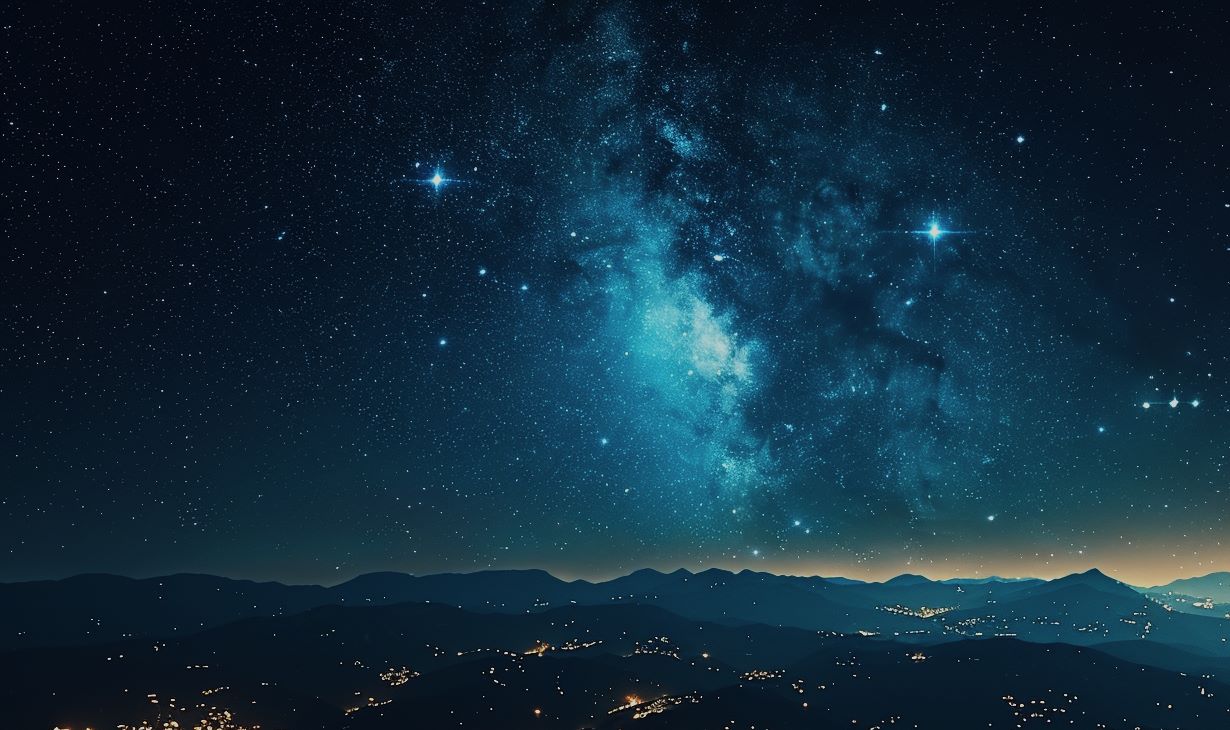
A Sign of Stellar Evolution
The reappearance of T Coronae Borealis is more than just a spectacular astronomical display. It provides a glimpse into the dynamic mechanisms involved in the evolution of stars. Astronomers may learn a great deal about the behavior of binary star systems, material transfer between stars, and the complex dance between life and death in our local cosmos by observing novae.
For experienced sky watchers as well as inquisitive beginners, the possible 2024 eruption of T CrB offers a unique chance to see an uncommon celestial occurrence. If we are prepared and patient enough, we could witness a stunning show in the night sky that illustrates the continuous drama of star evolution.
Thus, stay on the lookout and prepare to be astounded by the magnificence of the “dead nova” striking again.
***READ THIS UNIQUE ARTICLE ON THE DEVELOPMENT OF SCIENCE IN 20th CENTURY***
***READ THIS ARTICLE TO FIND THE IF AMATEUR RADIO STILL MAINTAINS ITS IMPORTANCE***


